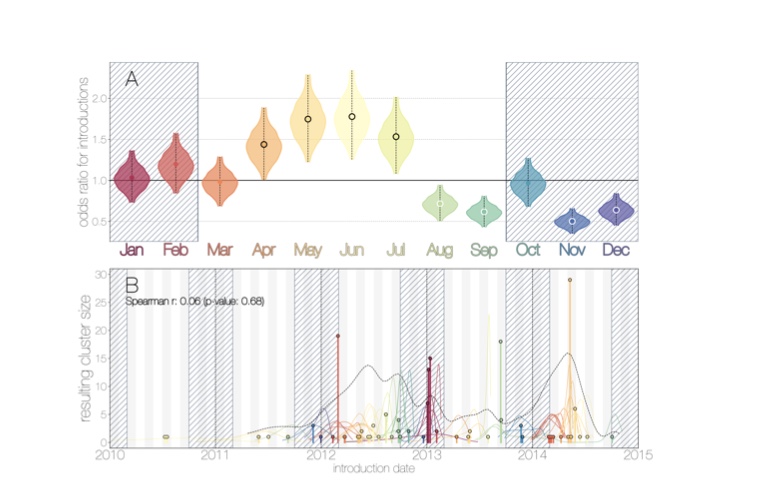When an infectious agent (viruses, primarily) transfer from an animal host to humans, it's referred to ask a spillover event. Most of the time, it occurs when there are close interactions between those two groups (ie. people sleeping in a pen where pigs sleep) and it can be disastrous.
For example, human immunodeficieny syndrome (HIV) spilled over from non-human primates in West Africa to humans through bushmeat handling. More frequent occurrences are spillovers from bats to humans.
Sometimes, the spillover is an isolated case - a child being bitten by a bat. Sometimes, it sparks a worldwide health crisis as seen in the outbreak of Severe Acute Respiratory Syndrome (SARS).
Middle East respiratory syndrome coronavirus (MERS-CoV) is a lesser known virus that is endemic in camels in the Arabian Peninsula.
The virus, first discovered in 2012, has caused more than 2000 infections and over 700 deaths (according to the World Health Organization (WHO)) in the Arabian peninsula. These are driven by seasonally varying zoonotic transfer of viruses from camels.
A new paper in eLife used existing MERS-CoV sequence data to explore its phylodynamics in both humans and camels. They analyzed a dataset of 274 MERS-CoV genomes.
What the group found is that the MERS-CoV virus evolves and changes in camels, and humans act like a short lived, transient, and terminal host. Because of this, MERS-CoV is unlikely to become endemic in humans.
What can be seen in the figure below are the variations in the MERS viral genomes. All of the different branch points indicate changes in the viral genome over time. As can be seen, with the different lines and branches shown in orange (indicating the changes in the viruses taken from infected camels) there is much variation. However, once the virus jumps to humans (shown in blue) there is little to no more branching.

In addition to this, the group also studied at what time of year the virus moves from camels to humans, and found seasonal variation. In particular, they identified four months (April, May, June, July) when the odds of MERS-CoV introductions are increased (see the figure below) and four when the odds are decreased (August, September, November, December).
Camels have calves from October to February. One thought is that, during this time when there are many newborns with weaker immune systems, the vulnerable population allows MERS infections to bloom.

MERS is a concern for those living in the areas of the Arabian peninsula with and near camels, especially from April - July. However, the good news is that, even though the virus continues to spillover from camels to humans, it is not well suited for human to human transmission.
MERS may continue on, like monkeypox, jumping species barriers but not successfully propagating in its new host. However, with the data coming from only a few years back, it is foolhardy to predict the mutations and subsequent abilities that MERS will acquire in the years to come.
Source: Gytis Dudas MERS-CoV spillover at the camel-human interface eLife 2018;7:e31257 DOI: 10.7554/eLife.31257




